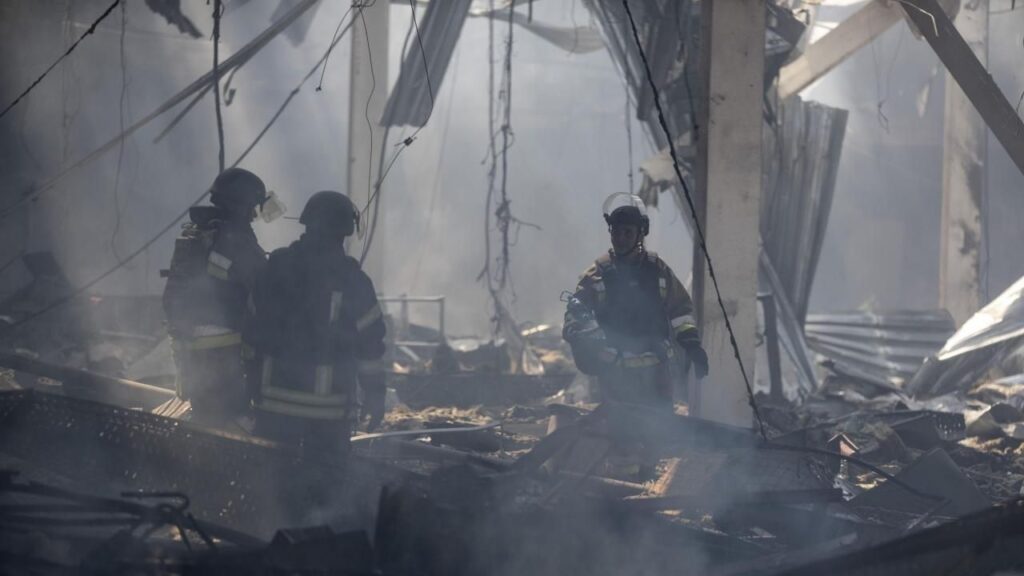KYIV, Ukraine — Russian forces launched a large-scale overnight attack on Ukraine’s energy infrastructure, targeting multiple regions and causing significant damage, Ukrainian officials reported Tuesday.
The assault, involving both missiles and drones, struck facilities in northern Ukraine and ignited a major fire in the west of the country, highlighting Russia’s continued strategy of targeting civilian infrastructure as the war, which began with Moscow’s full-scale invasion in February 2022, grinds on.

Ukraine’s air force commander stated that Ukrainian defense systems successfully intercepted three ballistic missiles and 25 out of 26 drones launched across nine regions. Despite this high interception rate, some attacks breached defenses, resulting in power outages and property damage.
In the northeastern Sumy region, which borders Russia, an energy facility was hit, plunging 72 settlements and over 18,500 consumers into darkness. Regional authorities, communicating via the Telegram messaging app, reported that energy workers were rushing to repair the damage and restore power.
The attack on Sumy underscores the vulnerability of Ukraine’s power grid, which has faced nearly daily bombardments over the past six months. Despite purchasing electricity from neighboring European Union countries, Ukraine struggles to make up the deficit caused by these persistent attacks. As a result, scheduled power cuts during peak evening hours have become a regular occurrence for many Ukrainians.
Further west, in the Ternopil region, an industrial facility was targeted, and a fuel reservoir was struck, officials said. Ukrainian television broadcast images of massive columns of black smoke rising over Ternopil, prompting regional authorities to urge residents to remain indoors.

Viktor Ustenko, a deputy head of the Ternopil regional administration, reported that more than 90 firefighters were engaged in efforts to extinguish the blaze. “The situation is fully under control,” Ustenko assured the public.
In Kyiv, the capital, city officials reported that air defenses successfully repelled an attack without major damage or casualties.
The Russian Ministry of Defense has not immediately commented on Tuesday’s attacks. Both sides in the conflict maintain that they target facilities of military significance rather than civilian infrastructure. However, the ongoing war has resulted in numerous civilian casualties.
These latest airstrikes come in the wake of a Ukrainian incursion into Russia’s Kursk region on August 6, demonstrating the conflict’s potential to spill across borders. Meanwhile, Russian forces have been making gradual advances in parts of eastern Ukraine, indicating a protracted and evolving battlefield situation.
As Ukraine continues to bolster its air defenses with Western support, the effectiveness of these systems in protecting critical infrastructure remains a key factor in the country’s resilience against Russian aggression.
The persistent targeting of energy facilities underscores the broader impact of the war on civilian life in Ukraine, with power outages affecting daily activities and the economy. As winter approaches, concerns grow about the potential humanitarian consequences of widespread energy shortages.
International observers continue to monitor the situation closely, with many calling for increased diplomatic efforts to bring an end to the conflict and alleviate the suffering of civilians caught in the crossfire.



